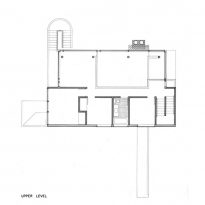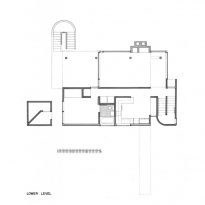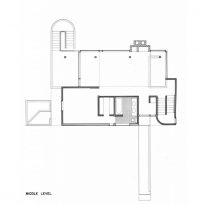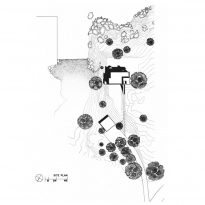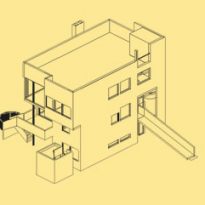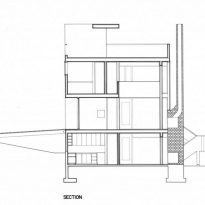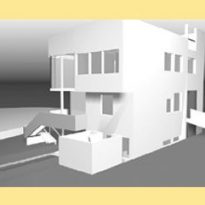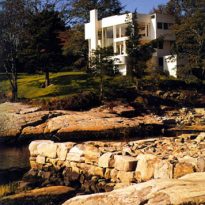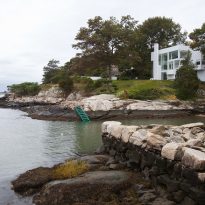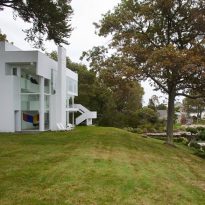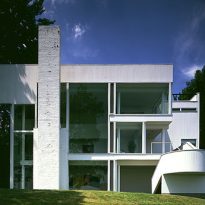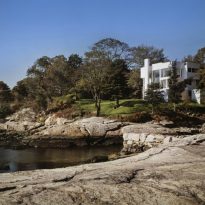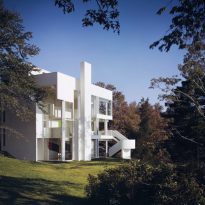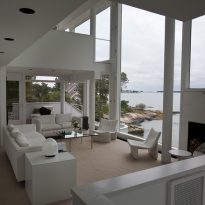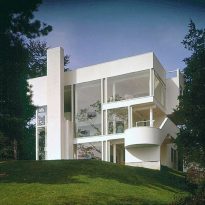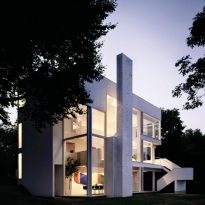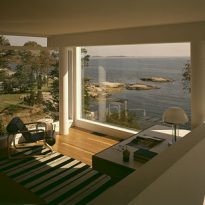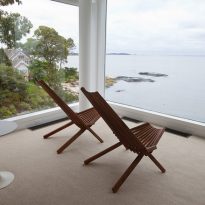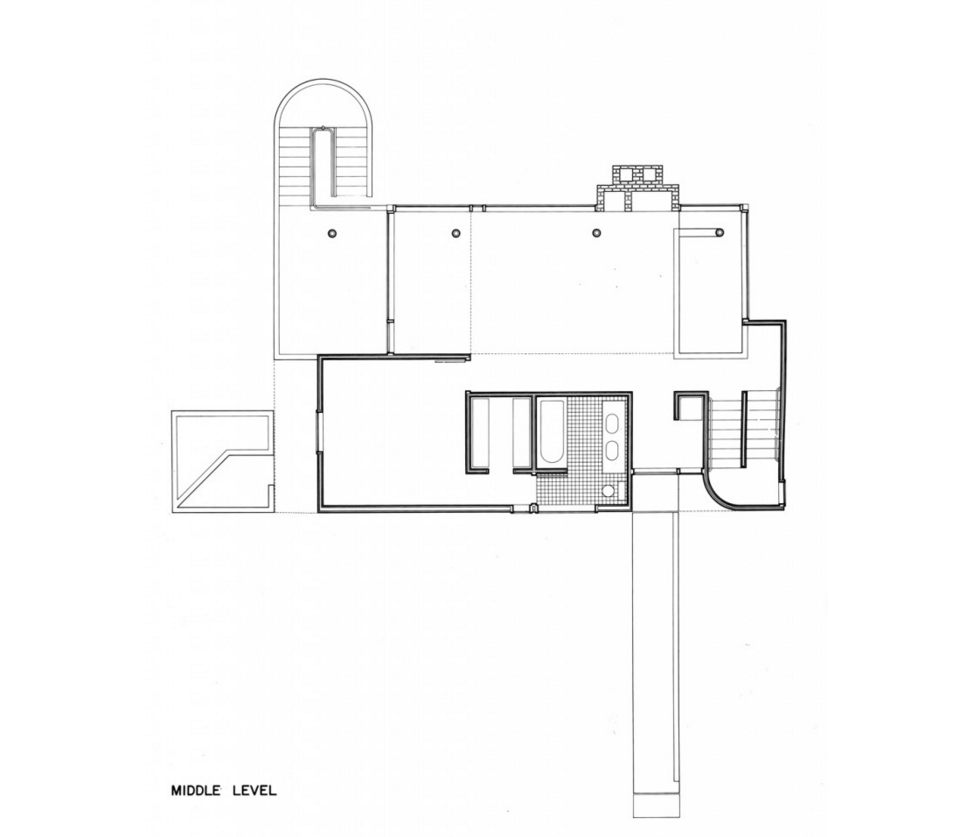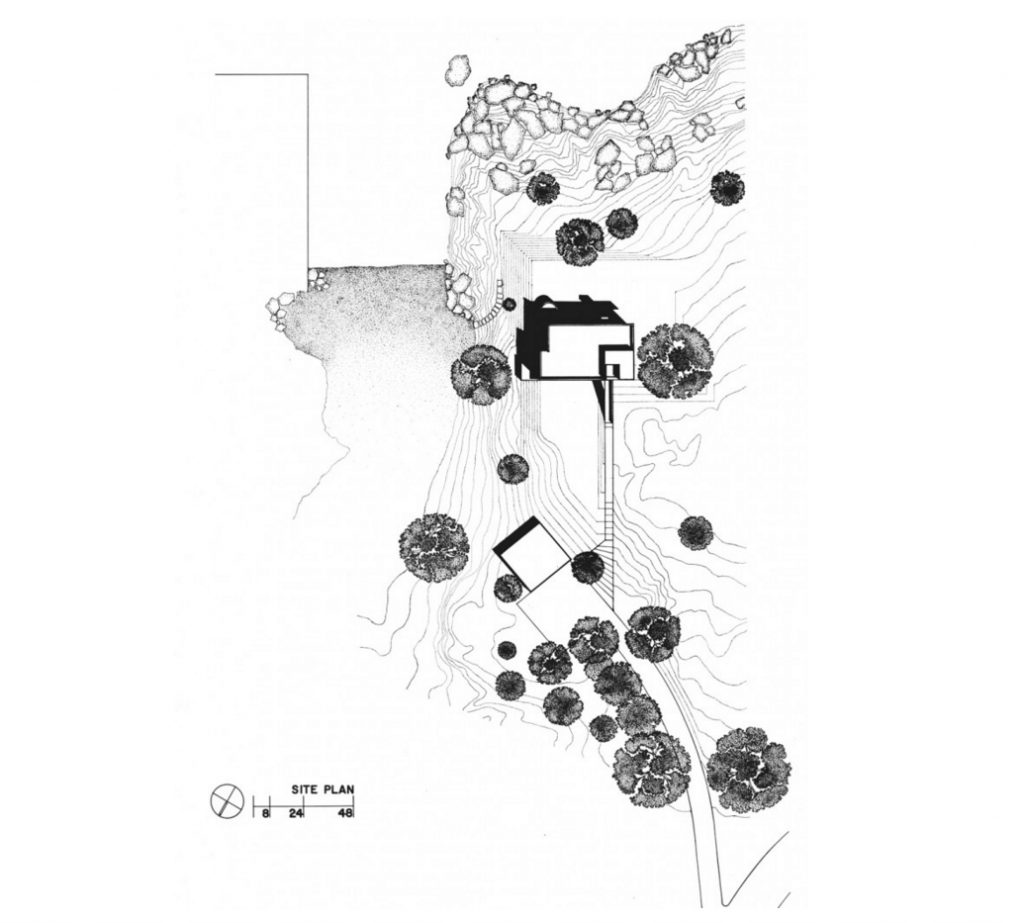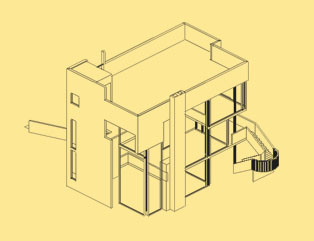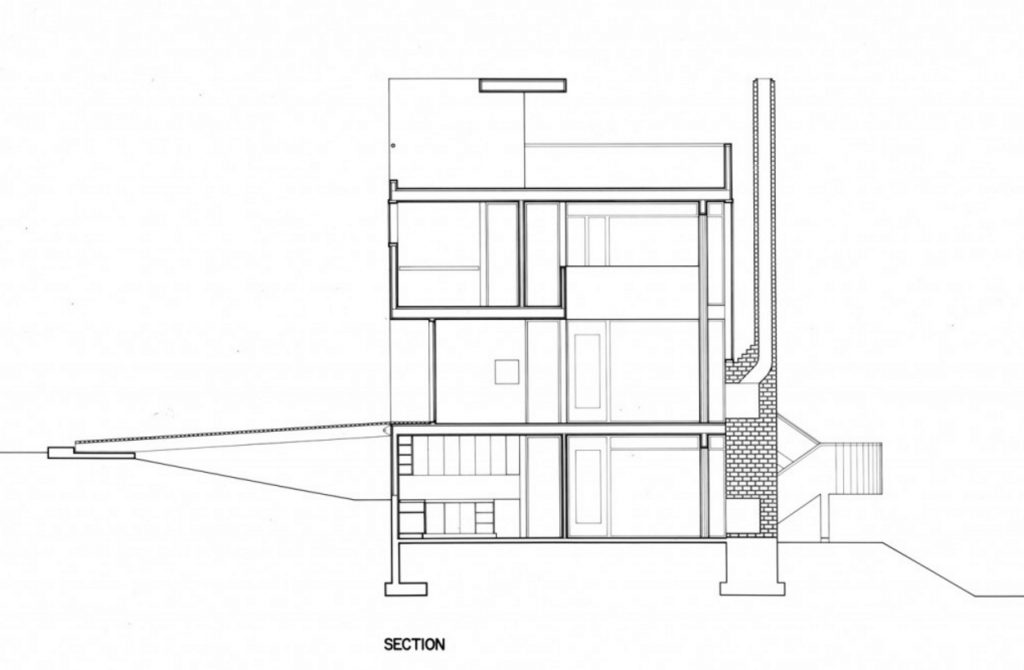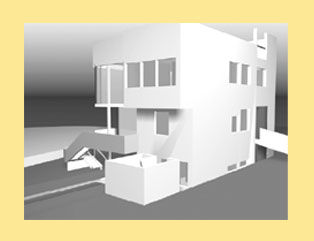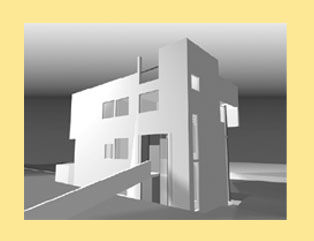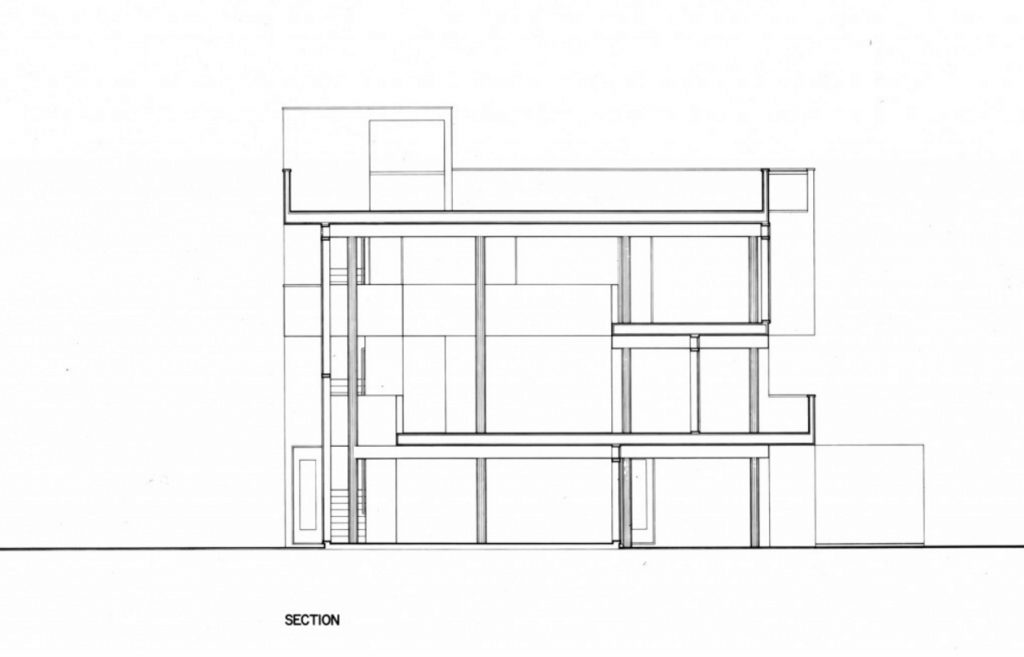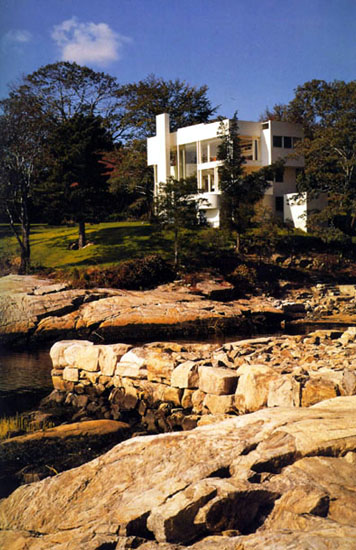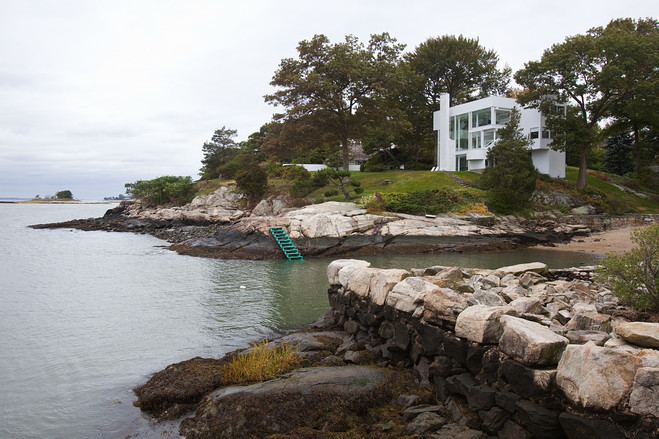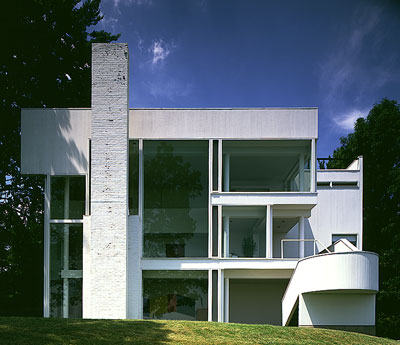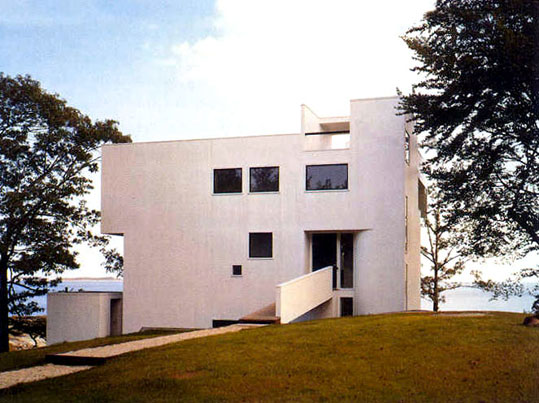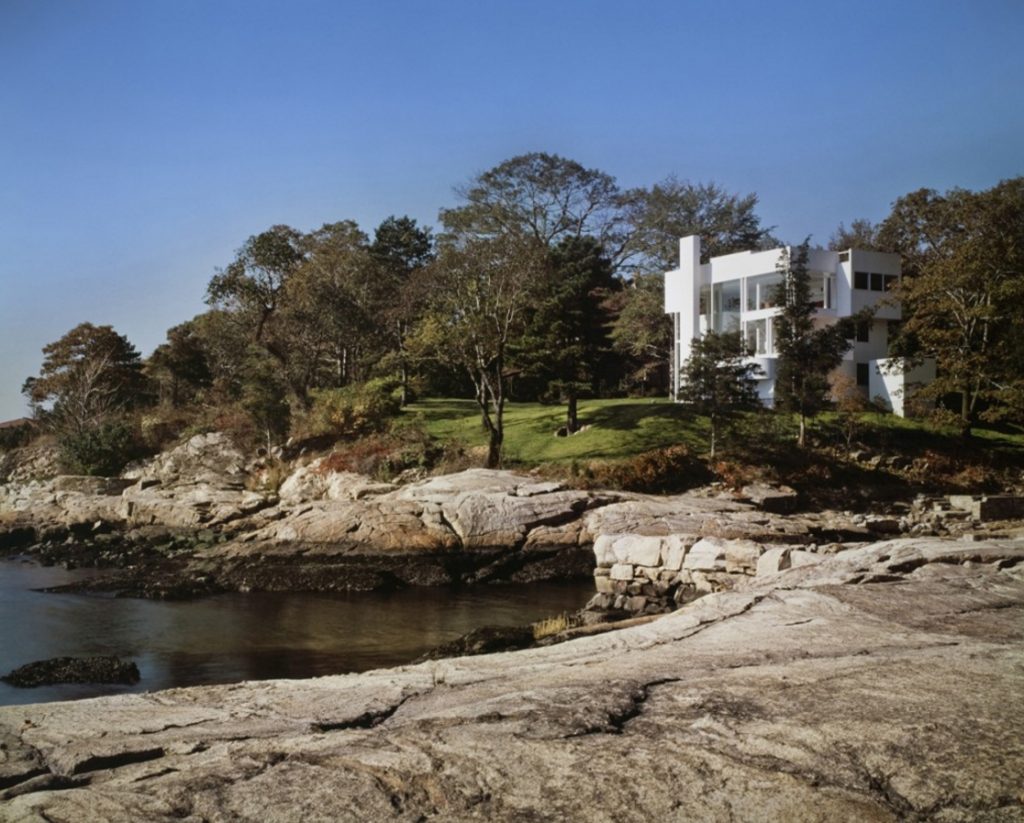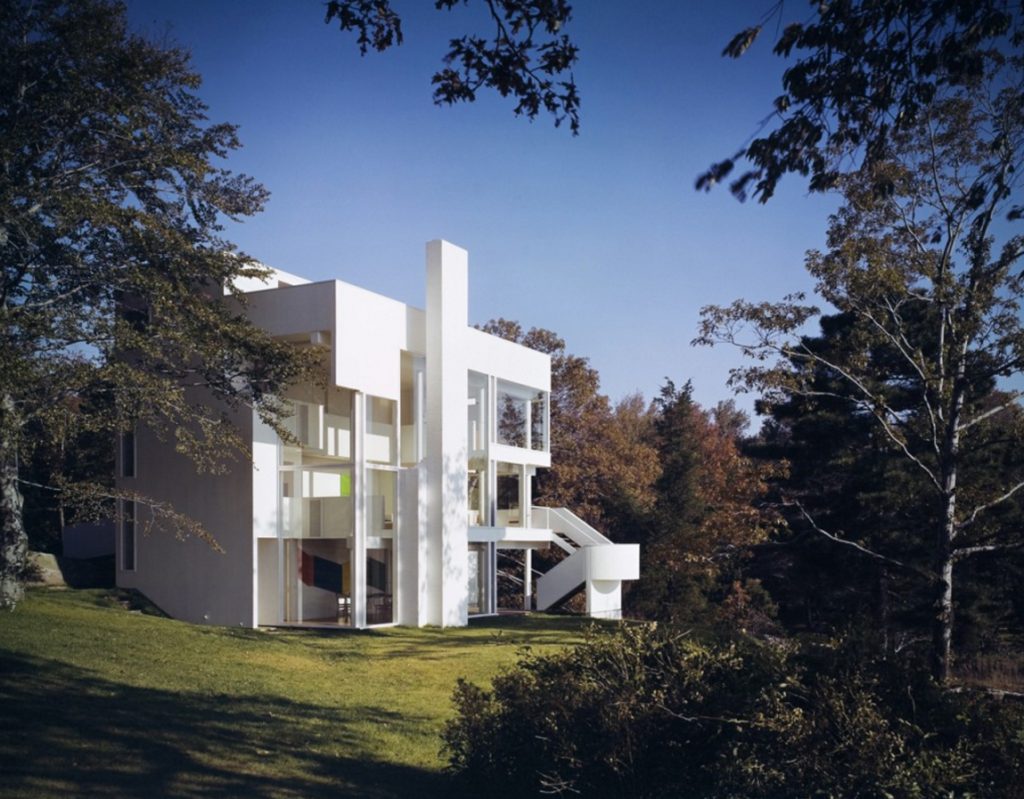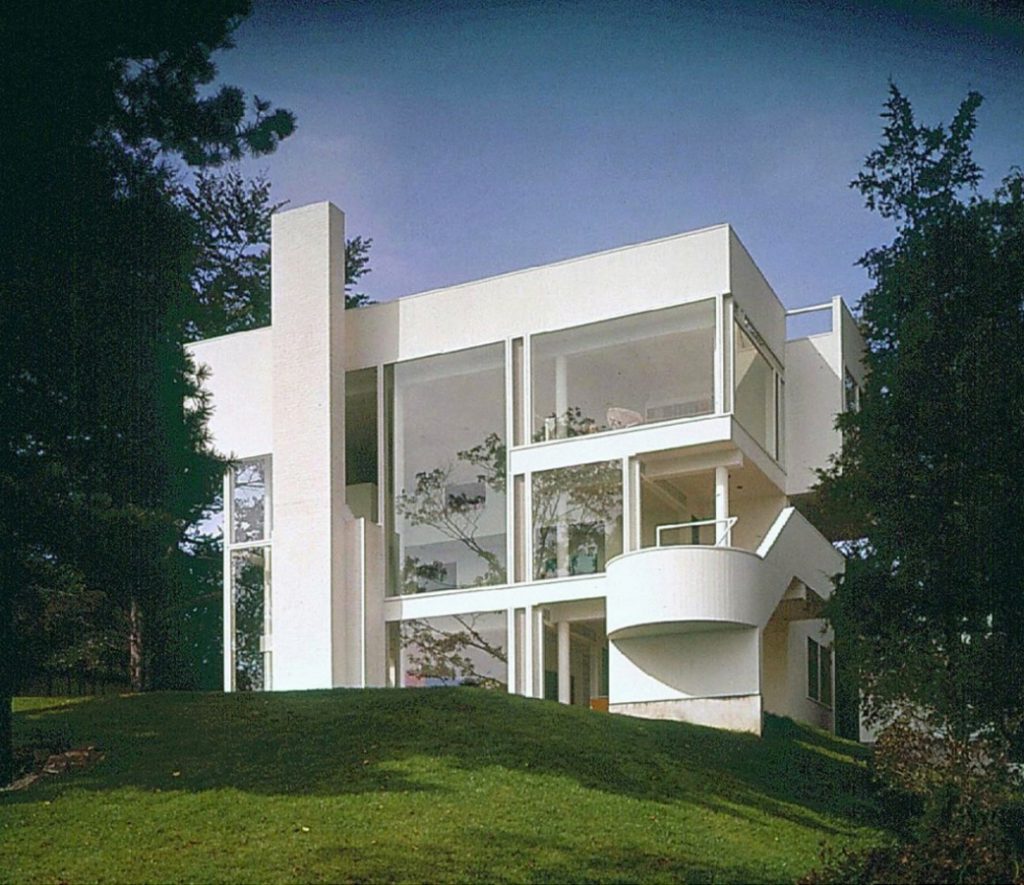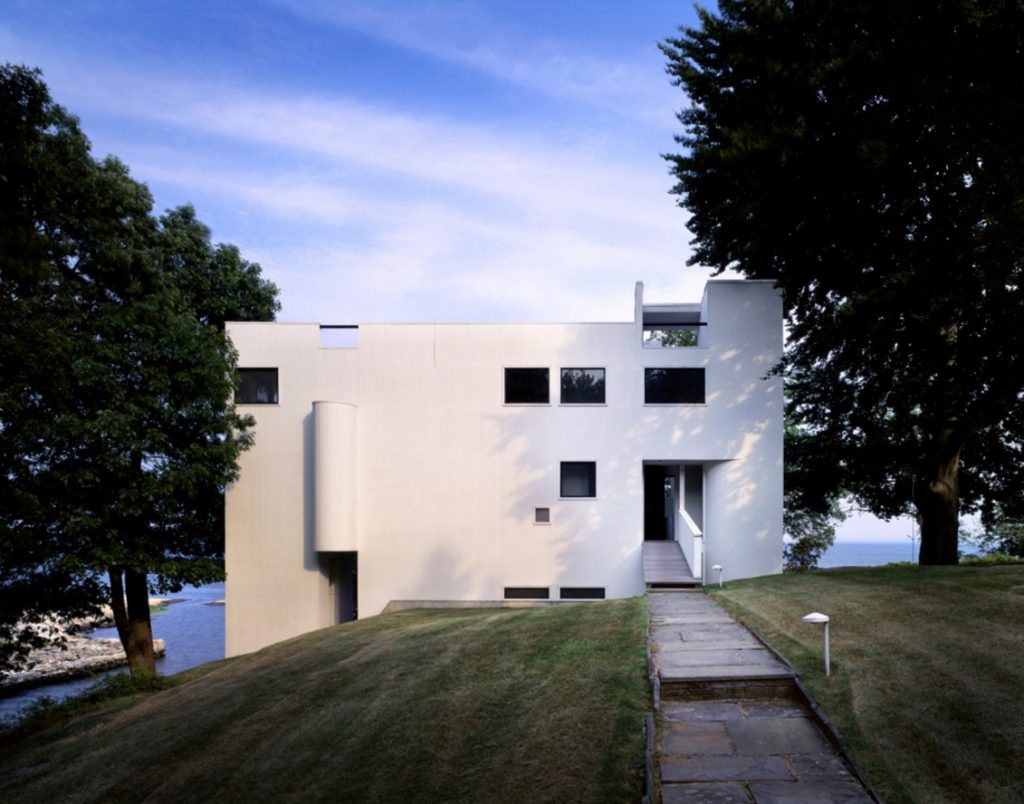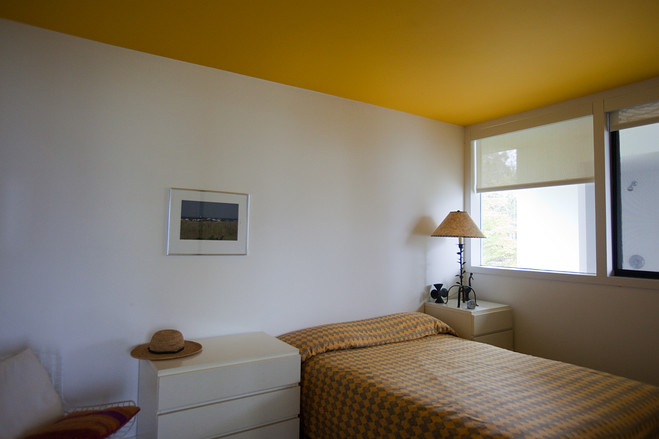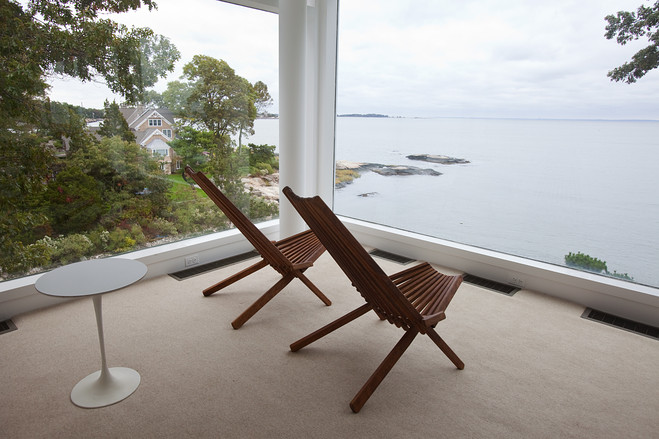Smith House

Introduction
The Smith House is part of a series of single-family homes rationalists that mark a first step in the work of Meier, when it was part of the group The Five Architects.
The compact, prismatic shape of the house expresses a certain attitude toward the place, besides being a refuge is also an object, reflecting and refracting the surrounding natural scene. The house is rooted in the strong tradition of family houses New England self-sufficient units.
Situation
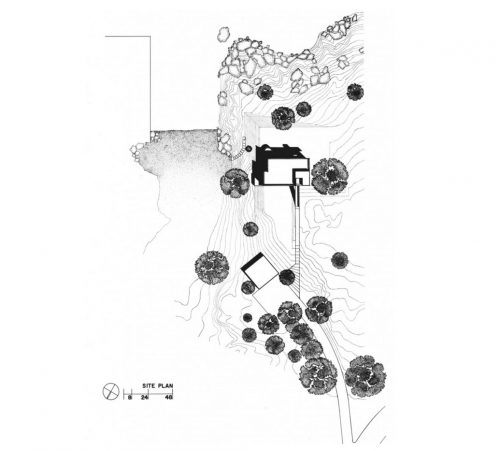
It is located on a wooded hillside sloping comes to water, a plot of 6.070m2 where the house is inserted into the natural landscape conceived as an artificial object overlooking Long Island Sound at Darien, Connecticut, United States.
Following the indications of where the approach, entry, access, and the views are organized to explore the contours of the site offers an unusual perspective of the landscape and water based.
Concept
Located on a hillside, the volume is a white prism that emerges among the trees creating a stark visual contrast.
Starting operation -in the style of rationalism corbusierano some critics have characterized as a mannerist cubic main volume, Meier is carving his work based operations of addition and subtraction.
The back side is treated as a closed facade with small openings, the front face is an open facade with large glass panels offering sweeping views of the horizon.
Spaces
The spatial organization of the house revolves around a programmed between public and private areas separate.
Private area ‘

The private part of the house is in the area looking to the forest and the road and where the main entrance to the house is located, it is the south facade. With a series of closed cellular spaces, these private areas are organized through three levels behind an opaque facade pierced by some windows intermittently placed.
The author organizes plants according to criteria characteristic of his early houses Zoning: at a later rectangular strip groups the service areas on the ground floor and bedrooms on the upper floors, occupying the entire front with the sequence of living spaces and reception.
Which gives the back strap to the top of the hill is encased in an opaque box with specific geometrically arranged openings.
Public area
Contrary to private areas, public spaces, where the family gathers and shares his social life, are in the back of the house, overlooking the water. In this sector the box is broken down into a large glazed and laterally staggered front that opens to the downward slope of the hillside. This scalability is produced by the successive social lag of three plants, phase shift which causes the appearance of double and triple heights that contribute to the dramatization of the interior space. From the outside, the ground floor and the upper levels appear as solid slabs studs firmly attached to the shell white crystal.
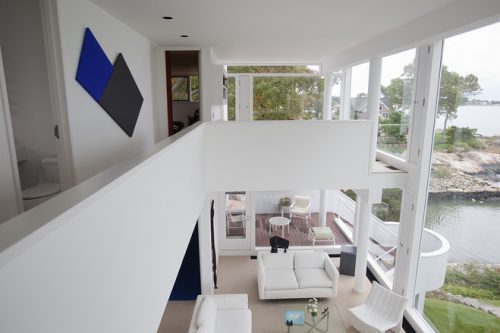
The curved staircase that descends from the first floor to the natural terrain, cubic annex small deposit and the access ramp to the house and the home box with duct adding volumes are qualifying the central volume, while anchor it to the ground.
“… There is a formal stratification, giving a sense of progression, when the site is traversed from the driveway, the shore, and the” progression line “identifies the main axes. Perpendicular to this axis, the planes intersecting at home respond to the rhythms of the hillside, trees, rock outcroppings, and the coast… “(Richard Meier, Oxford University Press, 1976. p23)
Circulation
The circulation system that guides the movement through the house extends far beyond the limits of the building itself. Within the Smith House, joins the horizontal movement of cells deprived areas and also links them to the public areas.
The vertical movement occurs in the stairwell located within the area enclosed room. The largest circulation pattern and the activity, related discrete spatial units inside.
The angle of the garage toward the path leading to the main facade and the curved wall on one side helps draw the open area of the house. The access is located on the upstream side of the house and the main view is towards the downstream portion of the land.
Structure
It is often thought, wrongly, that this house was built in concrete, when in fact made of wood. Once it crossed the south facade wooden structure that houses the private areas of the house and utility appears.

The link between the two contrasting spaces that form the house, the private and the public expressed through two structural systems. In public spaces, the structure consists of round steel columns standing free supporting beams and roof, independent elements that describe the pattern. In the private or closed side of the house, the walls are timbered load. External construction materials, vertical paneling and glass, also serve to express the contrast between the open and closed spaces. This abrupt juxtaposition of solid and void, incomplete without the other, expressing an apparent tension and a dialectic between the two areas.
Suspended between the brick fireplace and structural pillars, the glass wall creates a subtle tension that leads to who occupies a part of the outer life. The railings of the upper and lower levels with a setback from the glass, accentuates this feeling.
The fireplace, located opposite the entrance, is pushed outward by a strict framework of uprights.
Materials
The main materials used in the construction of the Smith House are wood and glass, with structural steel columns in the conservatory area and brick fireplace. Large glass walls allow subtle reflections and light changes, according to the whims of nature. Natural and artificial exist as independent, elementary experiences, though impossible to separate one from the other.
Video
